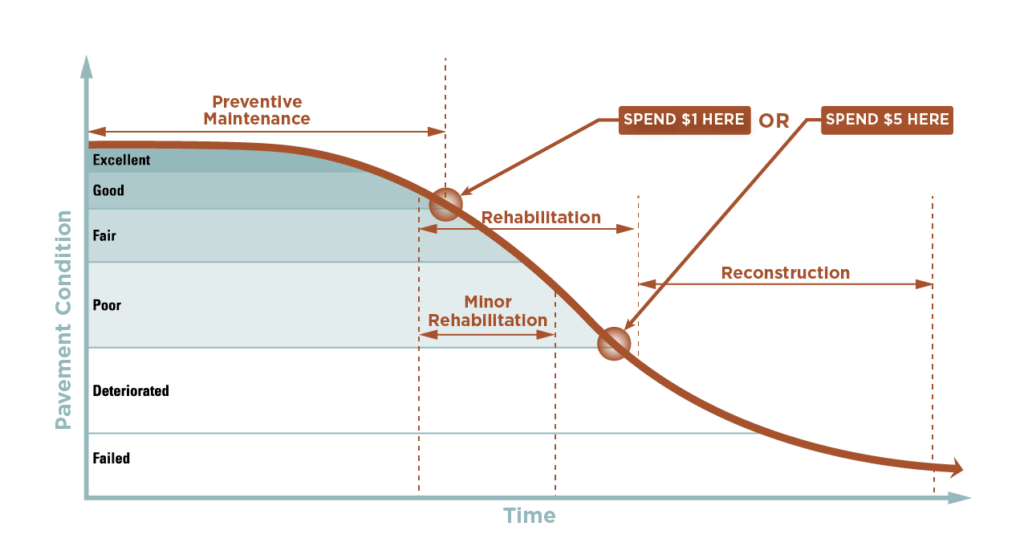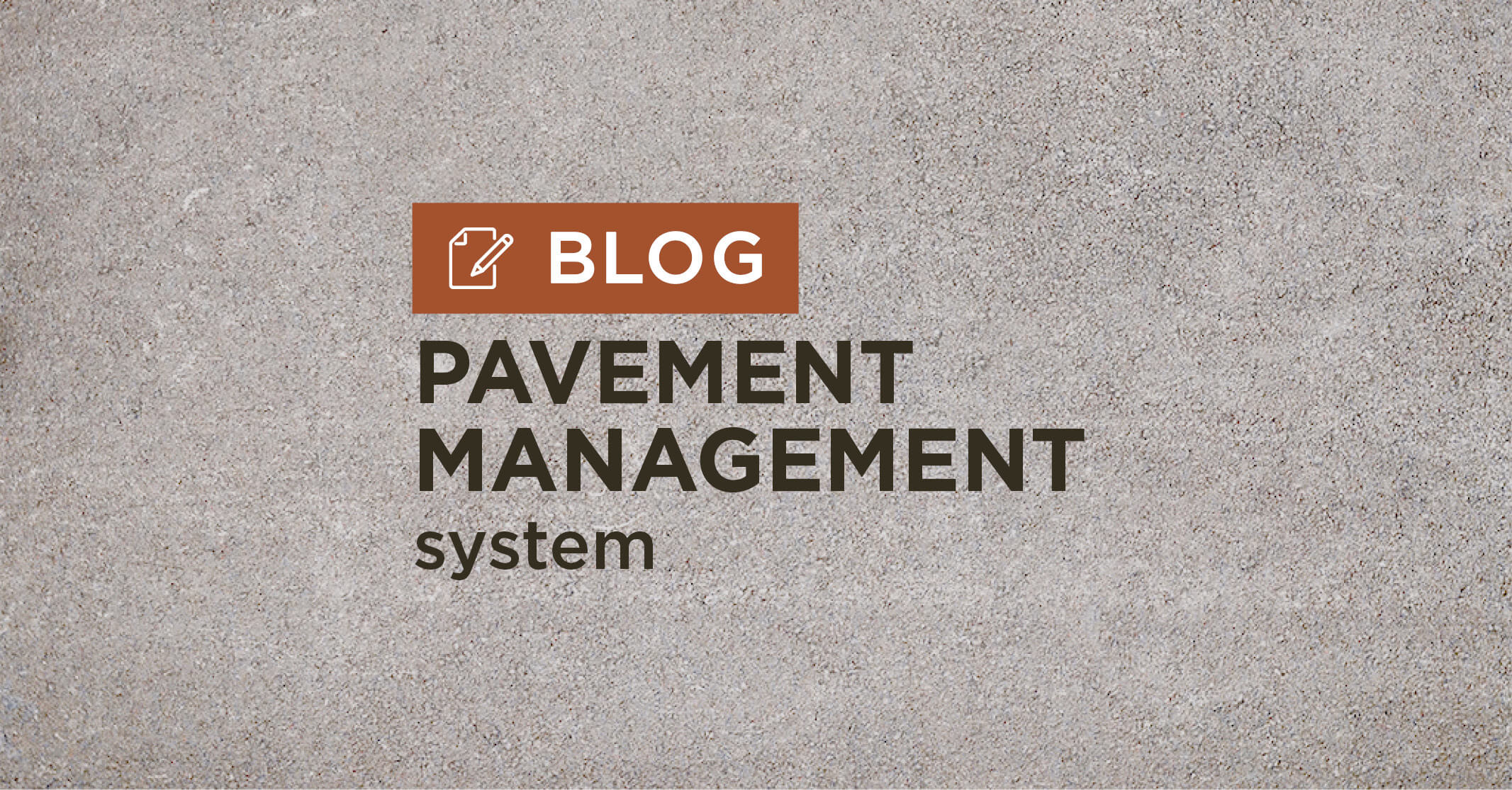Using a Pavement Management System to Reduce Rehabilitation Expenses
With the use of a pavement management system, unwelcome expenses can be greatly reduced. Pavement management is the process of planning the maintenance and repair work for an entire network of roadways to optimize pavement-related spending. This is accomplished by scheduling and performing preservation activities regularly. In short, a pavement management system helps to identify the pothole candidates, establish a plan to minimize their expansion, and improve the overall network.
With a focus on keeping roads in good condition using reliable pavement preservation techniques, the team at Snyder & Associates is experienced in the development and implementation of fiscally responsible pavement management programs. Whether the pavement in question is rigid (PCC) or flexible (HMA), Snyder & Associates has the experience to recommend long-term solutions to improve your pavement network. Jerod Gross, P.E., LEED AP is an expert in the pavement preservation field related to PCC pavements and leads seminars around the country in conjunction with staff from the National Concrete Pavement Technology Center (CP Tech Center). Laura Lamberty, P.E. has over 30 years of experience in the field of HMA pavements.
The professionals at Snyder & Associates are also able to determine the root cause of pavement failures to provide targeted solutions. These solutions may be as simple as using the proper pavement mix and thickness in the initial design, anticipating surface and subsurface drainage issues, or following proper construction practices. Regardless, we should expect new pavements to last a long time — minimizing or eliminating stop-gap repairs down the road.
Steps to Pavement Management Planning
A pavement management system can be as simple or as complex as it needs to be. With years of experience working with communities of various sizes, we can determine the best approach for each particular municipality. Regardless of size, however, gathering data and identifying pavement history is the first step that directly impacts potential solutions.
Gather and Document Pavement History
At the outset, our team determines the proper data collection tools necessary based on the roadway network. Whether the network requires a simple spreadsheet, or a dedicated software program like PAVER™, dTIMS®, or other data management tool, collecting the proper data is critical to developing an effective system. This information includes pavement age and type, current traffic levels, and preservation efforts that have already been applied. Additionally, in-depth discussions must be held with public works and private utility personnel regarding the history of utility maintenance, as well as potential future utility improvements that impact the study area.
Pavement Assessment using the Pavement Condition Index (PCI)
After collecting the data, the entire pavement network is evaluated and the data is used to calculate the Pavement Condition Index (PCI). The PCI is a standardized rating scale that ranks the pavements in the network based on specific types of distress and severity levels. Customized preservation strategies are assigned depending on the PCI ranking, level of distress, and classification (level of use).
If a pavement section in the network has a “low” PCI, it will be targeted for stopgap policies that aim to keep the road safe and schedule it for future reconstruction. If the pavement has a “fair” to “good” PCI ranking, the appropriate, cost-effective preservation techniques are assigned to restore it to an “excellent” condition rating.

Pavement Management System chart showing pavement condition vs time
Plan and Budget Pavement Maintenance, Rehabilitation, and Reconstruction Projects
Most pavement management software programs can predict the future condition of a pavement network by applying different budget strategies. This allows you to review different scenarios based on how and when you assign budgeted funds. As a result, you can prioritize the proper preservation or reconstruction strategies and develop a capital improvement program that maximizes every dollar spent. In most cases, it’s more economical to spend money keeping good pavements in good condition through preservation practices while scheduling reconstruction for poor pavements. But the clear goal should always be to maximize the network PCI to avoid letting minor deterioration turn into a complete street reconstruction.
How Do Communities Benefit from Pavement Management?
The cost-saving benefits of a pavement management system aren’t the only advantages for a community. In some cases, general maintenance and preservation costs can be controlled and potentially reduced. When properly monitored, the pavement in a network lasts longer — protecting the initial investment. Repairs are scheduled strategically with recommendations based on quantitative data. The engineering approach of this process leads to efficient spending with a focus on preservation. Finally, it recognizes that pavement networks are assets that need to be protected.
Using a database that combines pavement condition inventory, geometry, location, and historical information, along with analysis tools and prediction models, Snyder & Associates can help you develop a long-term pavement management plan. This plan will better leverage your budget and guide the proper sustainable preservation techniques.
